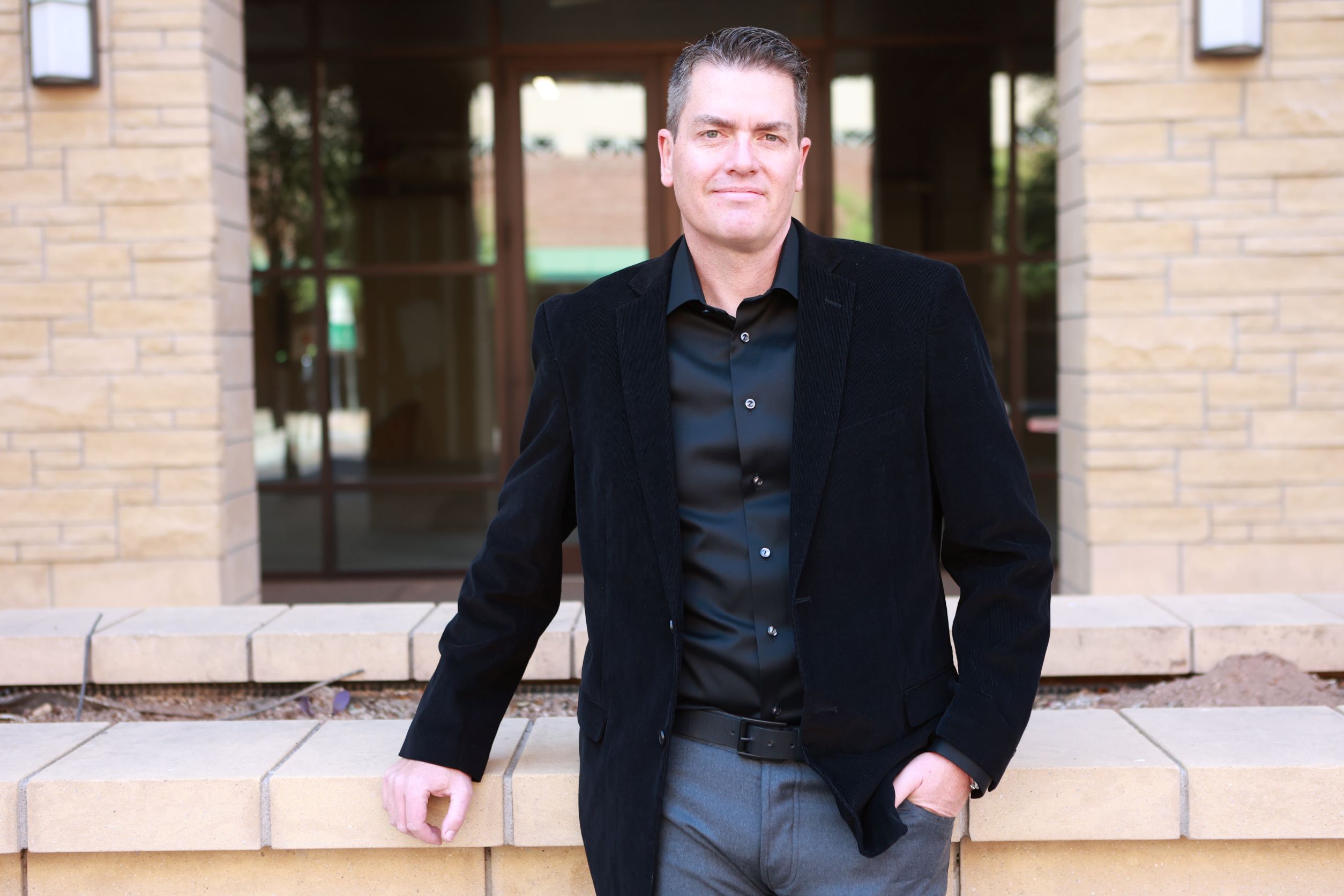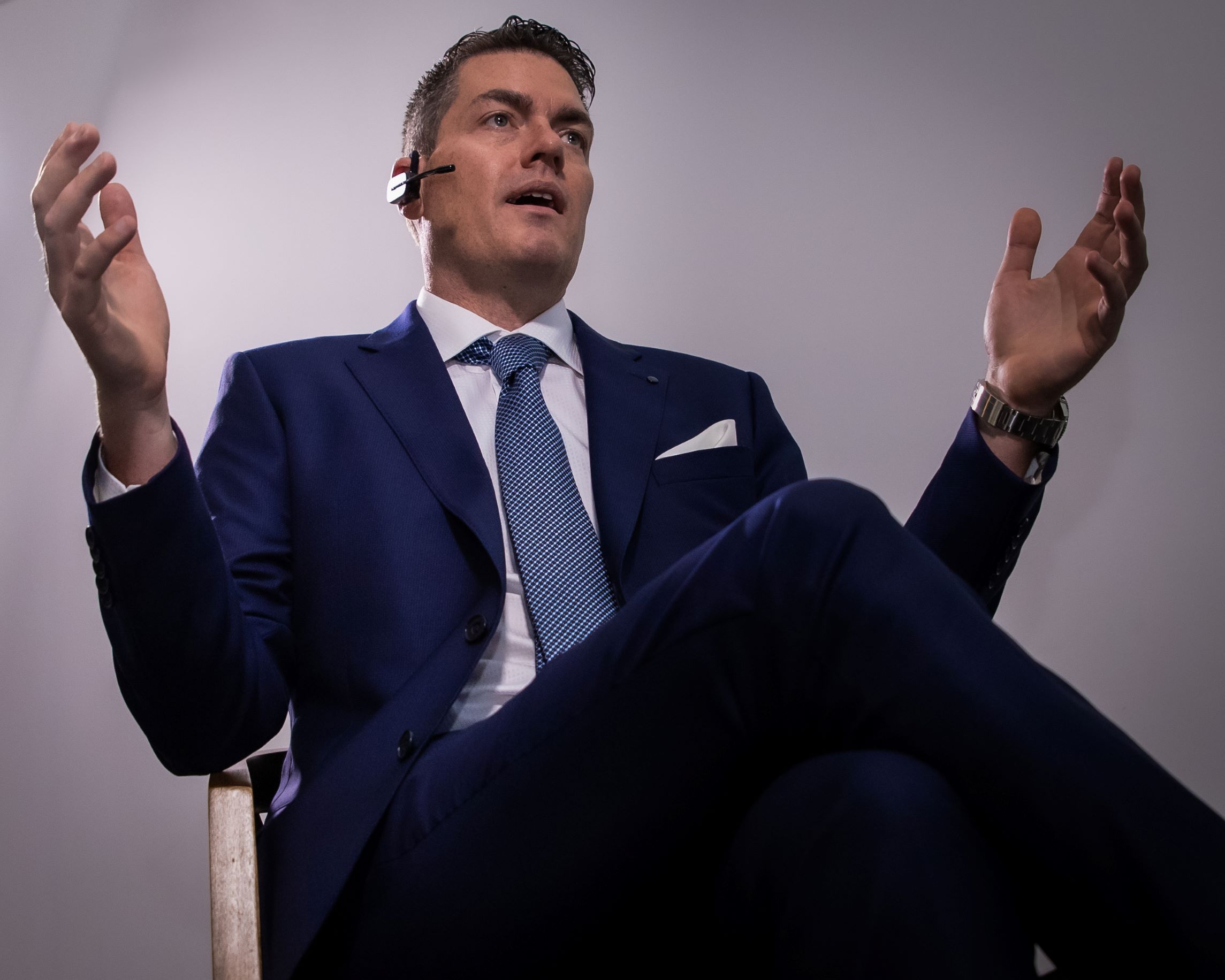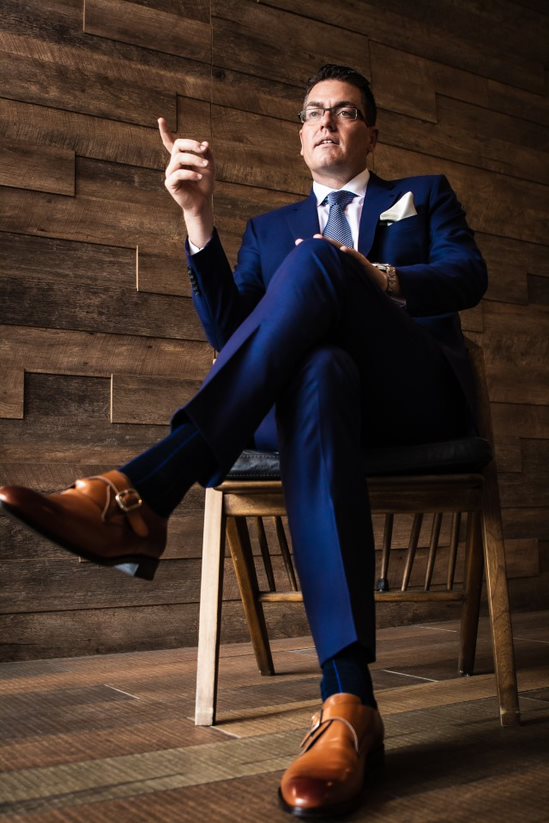BioXcellerator CEO Eric Stoffers on How Stem Cell Therapy Can Make Age 100 the ‘New 60’
“If you know you’ll live to be 100 and remain active, what decisions might you make differently? Your life suddenly opens up to seemingly limitless possibilities that once seemed implausible.”

Presented by BioXcellerator
Eric Stoffers had already enjoyed success as an entrepreneur before he founded BioXcellerator, a company which is rapidly gaining a global reputation as a leader in stem cell therapy and research.
Several years ago as a real estate developer and CEO of a publicly traded REIT, Eric learned about opportunities in “medical tourism,” a growing trend based on patients traveling to other countries for medical treatments not available in the U.S.
Exploring these opportunities, Eric discovered that although some U.S. clinics offer stem cell therapy, FDA regulations do not allow the most advanced forms of this treatment. So in 2018, BioXcellerator opened its state-of-the-art clinic and research lab in Medellin, Colombia.
Word quickly spread about the exceptional results that stem cell therapy delivers in alleviating chronic pain, treating sports & orthopedic injuries and a wide variety of autoimmune and degenerative diseases, and even reducing the impact of aging.
BioXcellerator’s patient list includes many well-known athletes including UFC champions such as Chuck Liddell and Kamaru Usman, former NFL Super Bowl champions Jim McMahon and Mark May, and other athletes and celebrities such as WWE champions Bobby Lashley and Kevin Nash.
Maxim interviewed Eric to find out about his company, how stem cell therapy works, why patients travel outside the U.S. for treatment, and what Eric calls his “moonshot” goal to make age 100, “the new 60.”

The list of patients you’ve treated looks impressive – with many athletes worth millions of dollars. How have you attracted such an accomplished clientele?
First, let me point out that the patients we treat come from all walks of life. In fact, most are not celebrities. We treat patients with serious sports and orthopedic injuries, spine and disc conditions, and even brain injuries that traditional surgery can’t heal and medications aren’t effective.
Other patients get treatment for diseases, such as autoimmune disorders, when they’ve run out of other medical options. But stem cell therapy helps heal the body, reduce the impact of aging and enhance overall wellness – and that’s what’s most exciting to me.
Sure everyone wants to feel better, look younger, and enhance athletic performance, but for athletes it extends beyond health benefits to include financial well-being. After all, an athlete’s career can be short, so the longer they can compete the more money they can earn.
That’s why professional athletes and “weekend warriors” alike seek out stem cell therapy to alleviate chronic pain and help them heal quicker from injuries and training. And as the population ages, we are treating more patients for debilitating back injuries, lumbar pain, herniated discs, bulging discs, degenerative disc disease and neck pain – all now leading causes of disability in the U.S.
If stem cell therapy offers so much potential, why isn’t treatment available in the U.S.?
There are stem cell clinics in the U.S., but FDA regulations currently don’t allow the more advanced treatment protocols we’ve developed that are backed by more than 20 years of clinical research. Unfortunately, that means that stem cells at U.S. clinics are not as potent, nor do patients often receive a high enough quantity of cells for the best potential results.
At BioXcellerator, our protocols are based on a specific type of stem cell – mesenchymal stem cells from donated umbilical cords. That’s because the research clearly shows that these cells can significantly improve patient outcomes through safe treatment protocols and are ethically sourced. I’d like to see the FDA change their policies, but until that happens, we can’t offer our therapies in the U.S.
https://www.instagram.com/p/CSH6cpCFJOB
I’d also like to see more information available online about stem cell therapy. Paid media restrictions on Google, for example, don’t allow advertising from stem cell clinics. But we do our best to make as much information available as widely as possible because when patients do research stem cell therapy, they discover that these improved outcomes are based on many scientific studies published by accredited academic and research organizations.
Why do these regulations exist? If stem cells offer so much promise, what’s preventing high-quality stem cell treatment here in the U.S.?
Unfortunately, our healthcare system doesn’t work in a way that create any incentives to make those changes. That’s because our “healthcare system” actually functions more as a “sick care system”.
What do you mean by a “sick care system”?
As an entrepreneur I appreciate the value of a free market, but if you follow the money, you can see that performing more procedures generates more revenue for physicians and hospitals. And as medications are prescribed more often, the more revenue pharmaceutical companies earn.
The way our current system works, these companies don’t have a vested interest in therapies that prevent disease and help us stay healthy so that we don’t get sick in the first place. I’m not questioning anyone’s motives, but powerful interest groups aren’t likely to be lobbying for therapies that merely keep us healthier and avoid illness unless those incentives change.
So what’s the critical difference between stem cell therapy at U.S. clinics compared to clinics like yours?
There’s a big difference. While some clinics seem to focus more on the therapy aspect of stem cell therapy, the quality or potency of cells themselves are just as important, if not more important, than how the treatment process works.
Much of what you read would lead you to believe that stem cells are almost like a commodity, but not all stem cells are alike. For example, some clinics use stem cells from the patient’s own fat tissue, but as one of our older patients said, “why would I want 60-year-old stem cells when I can have fresh new stem cells?”
He certainly makes a good point – and he’s right. Our research clearly shows that patient outcomes are far better with fresher, higher quality stem cells.
Are you referring to embryonic stem cells? That’s always been a controversial issue.
Not at all. We use cells from donated umbilical cords. That’s tissue that’s usually discarded after birth. But research clearly shows that the stem cells inside those umbilical cords are highly potent because they are, after all, very young cells.
There’s very little ethical concern for most people about what we offer nor what most stem cell clinic offer. Sadly, this lingering ethical issue in many people’s minds stems from 20 years ago when George Bush made his speech about researchers using embryonic stem cells (which was a fraction of the research being done) and the media ran with it — we had news about abortions.
It still never ceases to amaze me how one story in the media, one theme, could slow an industry and in this case result in our citizens not having access to the best therapies that can help alleviate their suffering and improve their health.
How does stem cell therapy work? And why would some cells be more potent than others?
https://www.instagram.com/p/CN7KdPAjouk
Stem cell therapy is based on the body’s natural repair process. As our Chief Medical Officer, Dr. Karolynn Halpert, often says, “the body knows how to heal itself.”
What she means is that right now, inside your body and inside mine, cells are aging and dying, so they are constantly being replaced. That’s just the natural healing process at work.
While there are many different types of cells — blood cells, muscle cells, and skin cells, for example — each performing very different biological functions, all cells begin as stem cells. Because stem cells contain your entire DNA – and are created in your bone marrow – your body can then differentiate these stem cells into any type of cell. In a sense, stem cells are your body’s universal repair team.
But that repair team ages along with us as we get older, so we don’t produce as many potent stem cells as when we were younger. To a great extent, this decline is actually why we age. It also shows how high-potency stem cells can not only promote healing for specific disorders, but also enhance immunity, reduce inflammation, and rejuvenate the body.
Various news reports about BioXcellerator mention your clinic’s “Golden Cells.” What are these cells?
As I explained, not all stem cells are alike. Because they can vary in quality, and we want more consistently effective treatment options, we’ve developed a protocol to assure that stem cells we use in our formulations are of the highest possible potency. “Golden Cells” refers to cells that are harvested and reproduced through this proprietary protocol.
How does this protocol work?
It starts with harvesting mesenchymal stem cells from Wharton’s Jelly that’s inside donated umbilical cords because our research shows these are the best cells.
But we want “the best of the best.” So we then screen cells to eliminate those from unhealthy donors, and then test the cells for specific biomarkers that indicate high potency. Then only those cells identified as the most potent are then purified and reproduced into infusions of millions of high-quality stem cells, which we call “Golden Cells.”
In addition to serving as CEO of BioXcellerator, you’re also Chairman of the Solutions for Healthier World Foundation. Can you tell us more about that organization and your role?
I’m always happy to discuss making the world a healthier one. Our foundation has adopted a core mission to alleviate suffering worldwide, which aligns to my personal mission and to the values we embrace at BioXcellerator.
Although the foundation doesn’t specifically focus on stem cells, I know that stem cell therapy can be unaffordable for many patients who could benefit. In many cases, we waive all fees to treat patients in cases where stem cells can dramatically improve healing potential from a wide range of tragic injuries and others diagnosed with serious diseases.
You also spend time working with organizations dedicated to helping military veterans. Are you a veteran?
No, but I come from a family of many vets and know first-hand how our nation’s veterans suffer as an under-served community who deserve better.
Interestingly, our work treating athletes for serious brain injuries has led to therapies that can help veterans and first-responders who have served our country with honor, recover from serious brain injuries that often remain untreated.

Why would these therapies be similar?
Professional athletes like UFC fighters and NFL players can suffer from recurrent traumatic brain injuries based on concussions sustained over many years, causing CTE and symptoms that resemble post-traumatic stress disorder – and stem cell therapy can help alleviate those symptoms. Reducing neuroinflammation is essential to treating TBI, CTE and PTSD and this is something that stem cells do exceptionally well.
These are the same symptoms many vets suffer – even if they’ve never seen combat. But unlike athletes, many veterans don’t get treatment and are far more likely to experience mood swings, fatigue, and other symptoms common to TBI, CTE and PTSD. Some even take their own lives. That’s unacceptable.
That’s why I spend so much time to help bring these issues into the spotlight so more veterans can heal using the same advanced therapies that help athletes heal from similar brain traumas.
You’re well known for your “moonshot” goal – making age 100 “the new 60.” That sounds exciting. Why did you set such an ambitious goal?
I love life, so of course I want to live to age 100 and beyond. But I want a life at that age to be an active one – traveling the world, hiking, maybe even skiing. With better nutrition, healthy lifestyle choices, and current technologies, we can extend both our lifespans and our “health spans.”
Think of it this way: If you’re 50 or 60 years old today and know you’ll live to be 100 and remain active, what decisions might you make differently? Start a new business venture? Pick up a new hobby? Your life suddenly opens up to seemingly limitless possibilities that once seemed implausible.
My goal may seem ambitious, but with new technologies we’re developing today – especially based on stem cells — and continuing innovation in the future, I’m convinced we can expect to live longer lives, and more importantly, enjoy our later years in good health.
